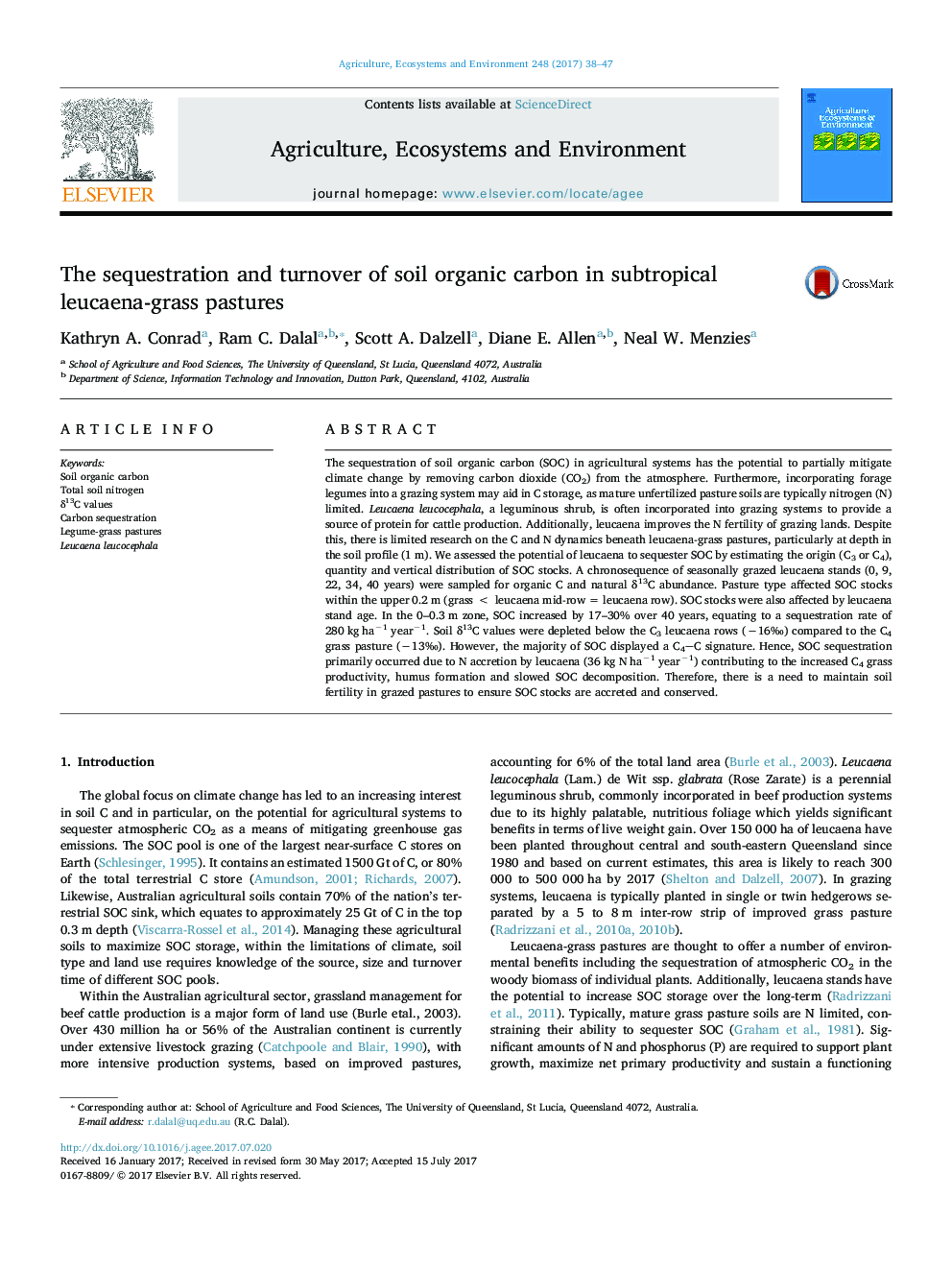| Article ID | Journal | Published Year | Pages | File Type |
|---|---|---|---|---|
| 5537802 | Agriculture, Ecosystems & Environment | 2017 | 10 Pages |
Abstract
The sequestration of soil organic carbon (SOC) in agricultural systems has the potential to partially mitigate climate change by removing carbon dioxide (CO2) from the atmosphere. Furthermore, incorporating forage legumes into a grazing system may aid in C storage, as mature unfertilized pasture soils are typically nitrogen (N) limited. Leucaena leucocephala, a leguminous shrub, is often incorporated into grazing systems to provide a source of protein for cattle production. Additionally, leucaena improves the N fertility of grazing lands. Despite this, there is limited research on the C and N dynamics beneath leucaena-grass pastures, particularly at depth in the soil profile (1 m). We assessed the potential of leucaena to sequester SOC by estimating the origin (C3 or C4), quantity and vertical distribution of SOC stocks. A chronosequence of seasonally grazed leucaena stands (0, 9, 22, 34, 40 years) were sampled for organic C and natural δ13C abundance. Pasture type affected SOC stocks within the upper 0.2 m (grass < leucaena mid-row = leucaena row). SOC stocks were also affected by leucaena stand age. In the 0-0.3 m zone, SOC increased by 17-30% over 40 years, equating to a sequestration rate of 280 kg haâ1 yearâ1. Soil δ13C values were depleted below the C3 leucaena rows (â16â°) compared to the C4 grass pasture (â13â°). However, the majority of SOC displayed a C4C signature. Hence, SOC sequestration primarily occurred due to N accretion by leucaena (36 kg N haâ1 yearâ1) contributing to the increased C4 grass productivity, humus formation and slowed SOC decomposition. Therefore, there is a need to maintain soil fertility in grazed pastures to ensure SOC stocks are accreted and conserved.
Related Topics
Life Sciences
Agricultural and Biological Sciences
Agronomy and Crop Science
Authors
Kathryn A. Conrad, Ram C. Dalal, Scott A. Dalzell, Diane E. Allen, Neal W. Menzies,
